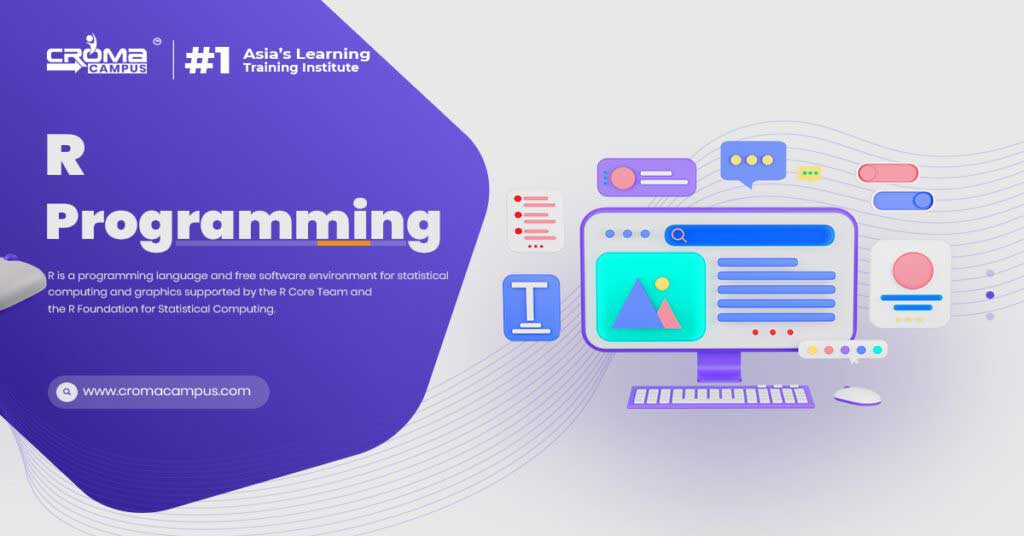Overview
If you are working in data analysis or machine learning, you might be wondering how to use both R and Python together. Both languages are powerful, and combining them can help you get the most out of your data. For those new to R, an R Programming Online Course can be a great start to learning the basics. Read-on will explain how to use R and Python together and the benefits of doing so.
Why Combine R and Python?
Both R and Python are popular tools in the world of data science. Each has its own strengths:
- R: Known for its strong statistical analysis and beautiful data visualizations. It’s great for detailed data analysis and creating complex charts and graphs.
- Python: Versatile and widely used in general programming and machine learning. It’s great for building and training machine learning models and handling various data tasks.
By combining R and Python, you can use the best features of each language. For example, you might use Python to handle data and build models, then switch to R to create stunning visualizations of your results. This combined approach can lead to better and more insightful data analysis.
How to Use R and Python Together?
1. Using R and Python in Jupyter Notebooks
Jupyter Notebooks are interactive documents where you can mix code, text, and graphics. With a tool called rpy2, you can run R code inside a Python Jupyter Notebook.
Steps:
- Install Jupyter Notebook on your computer.
- Install rpy2, which lets you run R code from within Python.
- Set up your Jupyter Notebook to use R with a simple command.
Table: Jupyter Notebook Setup
| Step | Action |
| Install Jupyter | Run pip install notebook in your command line. |
| Install rpy2 | Run pip install rpy2 to enable R in Python. |
| Setup Notebook | Use %load_ext rpy2.ipython to start using R. |
2. Calling Python from R Using reticulate
The reticulate package in R allows you to run Python code directly in your R environment. This means you can switch between R and Python seamlessly.
Steps:
- Install the reticulate package in R.
- Use functions like reticulate::py_run_string() to run Python code from within R.
Table: Using reticulate for Python in R
| Function | What It Does | Example |
| reticulate::py_run_string() | Runs a Python code snippet directly | reticulate::py_run_string(“print(‘Hello’)”) |
| reticulate::source_python() | Sources an entire Python script | reticulate::source_python(“script.py”) |
3. Using APIs to Connect R and Python
You can also create an API (a way for programs to talk to each other) in Python and access it from R. This method involves setting up a Python server and sending requests from R to it.
Steps:
- Create an API in Python using a framework like Flask or FastAPI.
- In R, use packages like httr to make requests to your Python API.
Table: Setting Up a Python API
| API Framework | Setup Steps | What It Does |
| Flask | Install with pip install flask | Builds a simple web server for API calls |
| FastAPI | Install with pip install fast API unicorn | Creates a modern API with async support |
Practical Uses for Combining R and Python
Combining R and Python is useful in various scenarios:
- Data Cleaning: Use Python for initial data cleaning and manipulation, then use R for detailed analysis and visualization.
- Statistical Analysis: Perform complex statistical tests and create visualizations in R, while using Python for additional data processing or model building.
- Machine Learning: Build machine learning models in Python and use R to create reports and visualizations of the model’s performance.
Table: Example Workflow
| Task | R Tool | Python Tool | Purpose |
| Data Cleaning | tidyverse | pandas | Clean and prepare data for analysis |
| Statistical Analysis | ggplot2, stats | scipy, statsmodels | Analyze data and perform statistical tests |
| Machine Learning | caret, e1071 | scikit-learn, TensorFlow | Train and evaluate models |
Summing Up
Combining R and Python can greatly enhance your data analysis capabilities. By taking an R Programming Online Course, you’ll get a solid foundation in R, while learning to integrate it with Python will allow you to harness the strengths of both languages. The advantages of R programming include its powerful statistical tools and visualization capabilities, which can complement Python’s flexibility and machine learning strengths. Mastering how to use R and Python together can make you a more effective data analyst and open up new possibilities for your projects.








